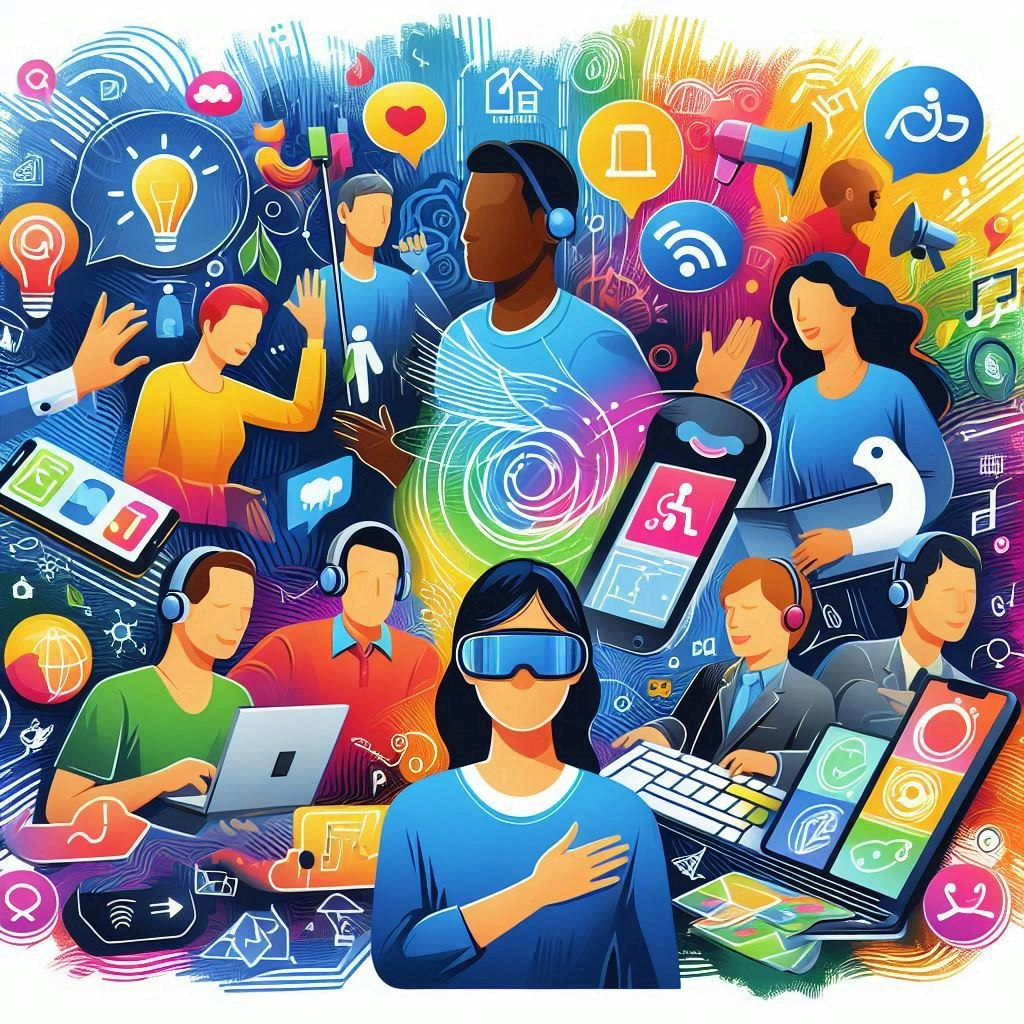Introduction
Inclusive design isn't just a buzzword; it's about creating products and experiences that work for everyone. Imagine a world where every website, app, or physical product is usable by people of all abilities. That's the goal of inclusive design.
Traditionally, making experiences accessible has been a challenge. But AI is changing the game. It's giving designers and developers powerful tools to create products that truly reach everyone.
In this article, we'll explore the top 8 AI accessibility tools that are making a big difference in inclusive design. But before then, here's a little background.
What is Inclusive Design?
Inclusive design is about creating products and services that are usable by everyone, regardless of their abilities. It's a fundamental principle of UX design that ensures equal access and opportunity.
Hence, product design accessibility refers to the design of products, devices, services, or environments for people with disabilities. It focuses on removing barriers that prevent interaction with your product.
Key terms to note include:
Disability: A physical, sensory, or cognitive impairment that limits a person's ability to participate fully in everyday activities.
Assistive technology: Tools and devices that help people with disabilities access information and complete tasks.
Universal design: Designing products to be usable by the widest range of people possible.
Why Make Designs Inclusive?
Creating inclusive products isn't just about doing the right thing; it's also good business. When you design for everyone, you expand your potential customer base.
Additionally, inclusive design often leads to better user experiences for all users, not just those with disabilities.
For example, a website with clear navigation and easy-to-read text benefits everyone, including people who are aging or have temporary impairments.
Common Accessibility Challenges
Despite progress, many accessibility challenges persist. Common barriers include:
Visual impairments: Difficulty seeing or understanding visual content.
Hearing impairments: Difficulty understanding audio content.
Motor impairments: Difficulty using keyboards, mice, or touchscreens.
Cognitive impairments: Difficulty processing information or making decisions.
Speech impairments: Difficulty communicating verbally.
To overcome these challenges, we need a holistic approach that considers the needs of diverse users.
And that is where compliance guidelines like the Americans with Disabilities Act (ADA) Accessibility Standards and the Web Content Accessibility Guidelines (WCAG) come in.
Now that we have a firm grasp of the fundamentals, let's dive into the newest AI accessibility tools helping designers create great experiences!
#1. Stark: Comprehensive AI Accessibility Tool
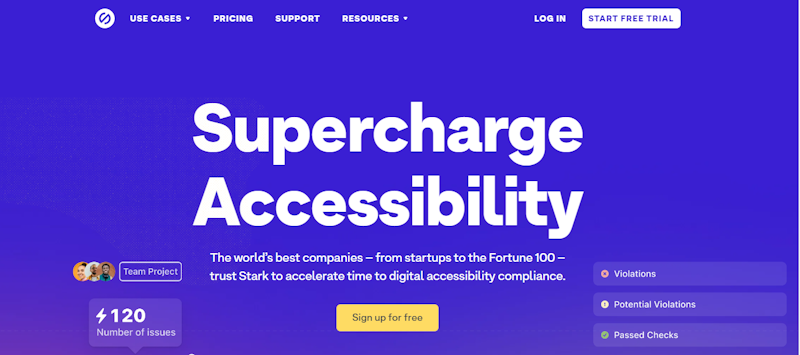
Creating products that everyone can use shouldn’t be a challenge. This platform is designed to make inclusive design a breeze for teams of all sizes. By integrating accessibility checks into the design process, Stark helps you catch potential issues early on, saving time and money.
Instead of being a standalone tool, Stark is built to fit smoothly into your existing workflow. Whether you're a designer who uses Figma or you work with Adobe XD, Stark offers features for your platform. And with real-time feedback and actionable insights, it ensures teams can create truly inclusive experiences.
Key Features and Benefits:
Speed: Up to 10x faster than other accessibility tools, saving time and resources.
Comprehensive: Covers accessibility issues from design to live product.
Compliance: Offers real-time reports and historical data for compliance tracking.
Cost-effective: Early issue detection prevents costly code remediation.
Security: Enterprise-grade security for sensitive project data.
Pricing: free tier, from $18/month for premium.
#2. AccessiBe: Advanced Accessibility with AI
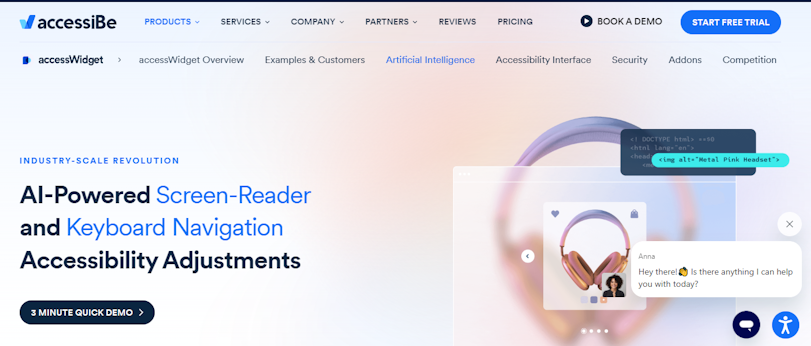
AccessiBe is a tool designed to handle complex accessibility concerns. It's basically an advanced screen reader and keyboard navigation tool that automatically fixes a wide range of accessibility issues, making your website usable for everyone.
What sets AccessiBe apart is its ability to understand the context of your website. This AI accessibility tool can almost see and think like a human. By analyzing your site's layout and content, AccessiBe makes intelligent adjustments to improve accessibility without breaking your design.
Key Features and Benefits:
AI-powered automation: Handles complex accessibility adjustments efficiently.
Contextual understanding: Accurately identifies and fixes issues based on website content.
Image recognition: Provides descriptive alternative text for images.
Continuous monitoring: Ensures ongoing accessibility compliance.
Comprehensive coverage: Addresses common accessibility challenges like popups, menus, forms, and links.
Pricing: free tier, from $49/month for premium.
#3. Aircaption: Make Captions with Ease
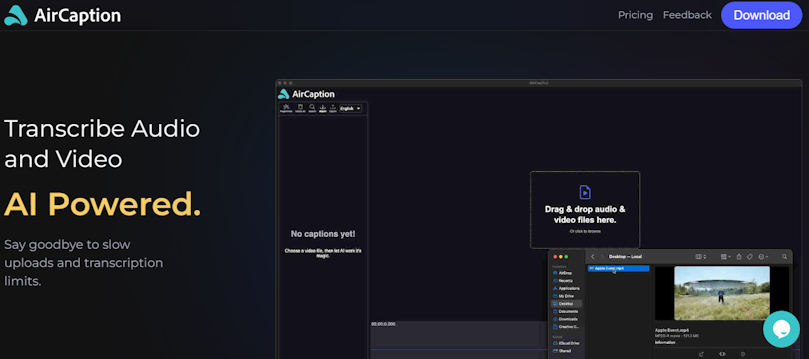
AirCaption is your one-stop shop for creating accurate and accessible captions. This tool makes it easy to transform audio and video content into text, catering to viewers with hearing impairments and those in noisy environments.
AirCaption's standout feature is its offline capability. This allows it to easily transcribe and create captions without relying on an internet connection. Whether you're on a plane, in a remote location, or simply prefer to work offline, AirCaption does the job.
Key Features and Benefits:
Speed and efficiency: Quickly generate captions with AI-powered transcription.
Offline capability: Transcribe and edit without an internet connection.
Multilingual support: Create captions in over 60 languages.
Customization: Edit captions for accuracy and timing.
Privacy: Protects user data by processing everything locally.
Pricing: free tier, from $19.99/month for premium.
#4. Read Easy.AI: AI-powered Readability Tool
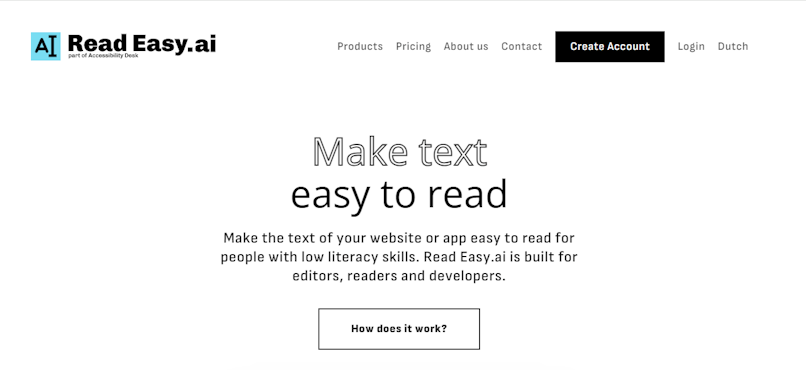
Read Easy.ai tackles the challenge of low literacy levels head-on. This AI-powered accessibility tool simplifies complex text, making it easier for everyone to understand.
Imagine a scenario where most people can access and comprehend written content online, no matter how technical. That's the goal of Read Easy.ai. With solutions for both creators and readers, the platform promotes inclusivity and removes barriers to understanding text.
Key Features and Benefits:
Readability analysis: Helps editors simplify text for audiences with low literacy skills.
Multilingual support: Simplifies text in several languages, including English, Spanish, and German.
Chrome extension: Offers a convenient way to access ReadEasy's features directly on web pages.
Microsoft Office integration: Integrates seamlessly with Word and Outlook for real-time feedback during editing.
Developer API: Enables developers to integrate ReadEasy's functionalities into their applications.
Pricing: free tier, from $2.99/month for premium.
#5. Play.ht: Realistic Text-to-Speech with AI
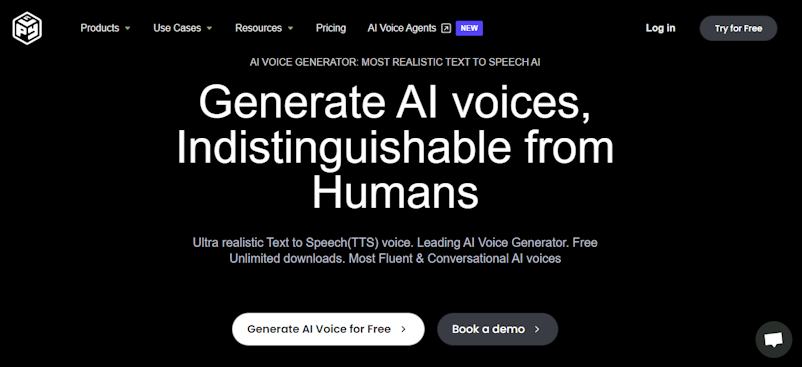
Play.ht takes text-to-speech to a whole new level. This platform uses advanced AI to generate incredibly realistic voices, perfect for adding narration, creating audiobooks, or even building chatbots.
What makes Play.ht special is the sheer variety and customizability it offers. There's a vast library of over 800 voices, spanning different languages, accents, and even emotions.
Key Features and Benefits:
Ultra-realistic AI voices: Generate human-quality narration for videos, podcasts, and more.
Extensive voice library: Choose from 800+ voices in 142 languages and accents.
Emotional control: Add personality to your voices with a range of emotions.
Custom voice creation: Clone existing voices or build unique characters.
Multi-platform compatibility: Integrates with various tools and platforms.
Pricing: free tier, from $31.20/month for premium.
#6. Userway: Your Accessibility Superpower
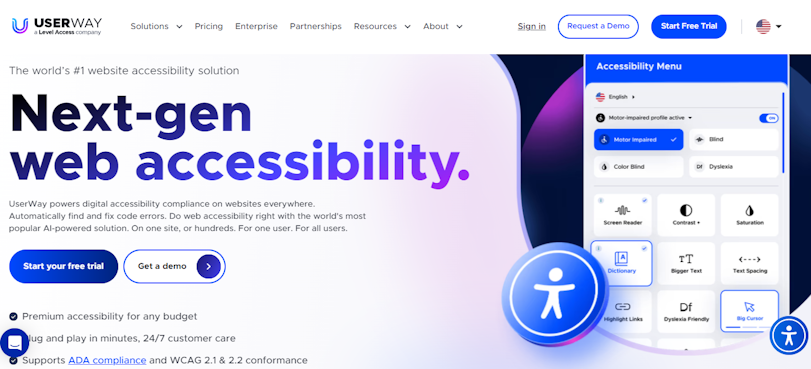
They call themselves the world's number one digital accessibility tool, so let's talk about UserWay.
This is basically an all-in-one accessibility solution for making your website or apps enjoyable to everyone. The AI-powered widget does the heavy lifting, finding and fixing those pesky accessibility issues.
From 24/7 monitoring to audits and fixes, as your accessibility assistant, Userway ensures your product effortlessly aligns with compliance standards like WCAG. It's not surprising lots of big-name companies trust them.
Key Features:
AI-powered: Automatically spots and fixes accessibility issues.
All-in-one solution: Covers everything from audits to fixes.
Compliance: Helps you meet those important accessibility standards.
Easy setup: Simple to use, even if you're not an accessibility expert.
Pricing: free tier, from $49/month for premium.
#7. Murf: Your AI Voiceover Studio
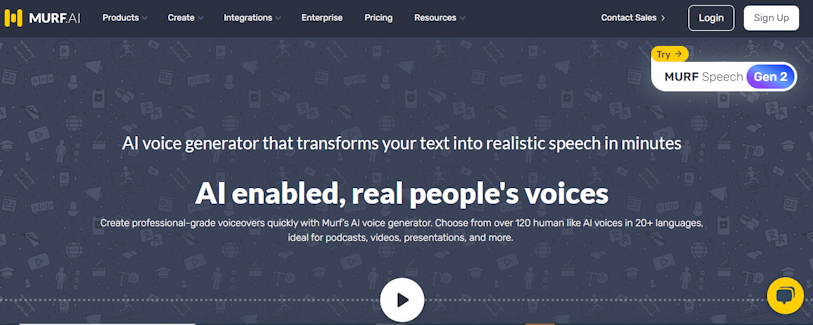
Murf is an AI-powered platform that transforms text into highly realistic speech. With a vast library of voices spanning multiple languages and accents, Murf allows you to create professional-quality voiceovers for various projects. From podcasts and audiobooks to explainer videos and advertisements, Murf offers a versatile solution.
Beyond basic text-to-speech, Murf shines with its advanced customization options. You can fine-tune pitch, speed, and emphasis, and even mimic your own voice style. This level of control ensures that the generated voice perfectly aligns with the desired tone and message.
Key Features:
Vast voice library: Choose from a wide range of realistic AI voices.
Customization options: Fine-tune voice characteristics to match your project.
Easy-to-use interface: Create voiceovers effortlessly.
Multiple file formats: Export audio in various formats for different platforms.
Integration capabilities: Combine voiceovers with images, videos, and other media.
Pricing: free tier, from $19/month for premium.
#8. Audioeye: AI + Human Expertise
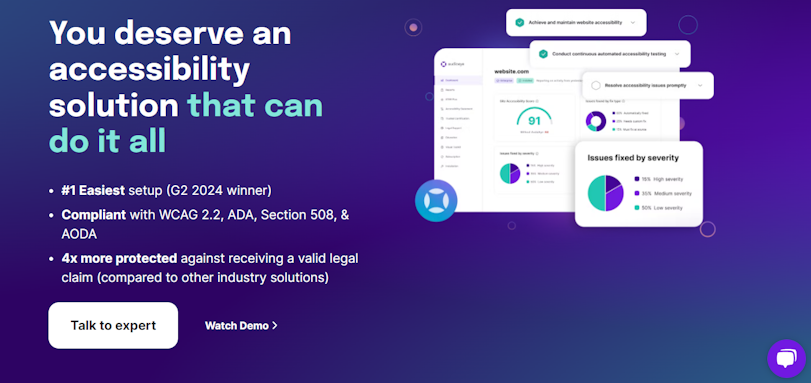
The last tool on our list is Audioeye. It's similar to other comprehensive accessibility solutions listed above, offering a range of tools and services to help businesses create inclusive digital experiences.
By identifying and fixing accessibility issues, AudioEye ensures compliance with regulations like ADA and WCAG while improving the overall user experience.
But one major thing that sets this solution apart from others is that it combines AI-powered automation with human expertise. The human touch provides a holistic approach to accessibility and addresses a wide range of issues with more tailored solutions.
Key Features:
Automated solution: Quickly identifies and fixes common accessibility problems.
Expert audits: Provides in-depth assessments by human accessibility experts.
Continuous monitoring: Proactively scans websites for emerging accessibility issues.
Custom code fixes: Develops tailored solutions for complex accessibility challenges.
Pricing: free tier and custom pricing.
Wrapping it Up
Artificial intelligence is making huge strides in creating a more inclusive digital world. The AI tools for accessibility we've covered in this article are proof of that. From design to content, accessibility is becoming easier to achieve. It's exciting to see how AI is shaping a future where everyone can participate fully online.

